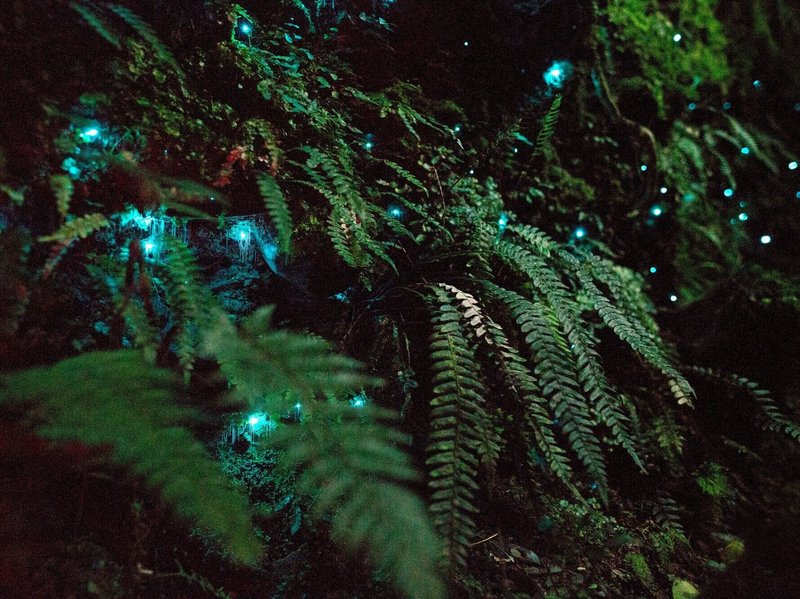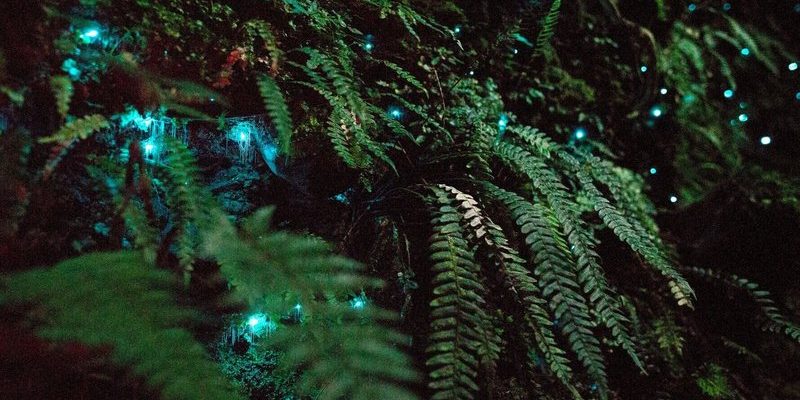
Let’s dive into how rainfall affects these captivating creatures. We’ll explore how moisture levels influence their habitat, how weather patterns dictate their life cycles, and the broader implications for the ecosystems they inhabit. It’s a delicate dance of nature, and understanding it can help us appreciate the complex relationships within the natural world.
The Life Cycle of Glow Worms
Glow worms aren’t actually insects; they are the larval stage of a fly known as the fungus gnat. Their life cycle consists of several stages, including eggs, larvae, pupae, and adults. During the larval stage, which can last several months to a few years, these tiny beings create silk threads to catch prey and emit that captivating glow that attracts unsuspecting insects.
Now, each stage of their life cycle can be influenced by environmental factors, especially rainfall. When it rains, it increases the humidity in their habitat, allowing the larvae to thrive. They can successfully catch more food because there are more insects around, which are also attracted to the moisture. Think of it as a restaurant that’s more popular on rainy days—more customers mean more business!
How Rainfall Affects Habitat Conditions
Glow worm colonies are often found in moist environments like caves, damp forests, and shaded areas. Rainfall is crucial for maintaining this moisture. When the rain falls, it seeps into the ground, replenishing the water supply in these areas. This creates a favorable environment for glow worms to flourish.
However, too much rain can lead to some serious problems. Excessive water can wash away the larvae or dilute the nutrient-rich substrate they depend on to grow. It’s a bit like overwatering a plant—too much water can suffocate the roots and lead to decay. Therefore, while some rainfall is essential, it must be just the right amount to support these magical creatures.
Impact of Drought on Glow Worms
On the flip side, a lack of rainfall can spell disaster for glow worm colonies. Drought conditions can dry out their habitats, making it challenging for larvae to survive. Without enough moisture, the availability of prey decreases, which means the glow worms might struggle to find food. You might be wondering how long these conditions can last— prolonged droughts can lead to reduced glow worm populations, and in severe cases, entire colonies can collapse.
During a drought, even if the glow worms survive, they may not grow as quickly or may take longer to develop. It’s similar to being in a constant state of starvation; their growth is stunted, and they might not reach maturity. This can lead to fewer adults emerging, which affects reproduction and future populations.
Seasonal Rainfall Patterns and Glow Worm Synchronization
Interestingly, glow worms are sensitive to seasonal rainfall patterns, which are crucial for their reproductive cycles. Many species of glow worms have adapted their life cycles to sync with the rainy season, maximizing their chances of survival. During the rainy months, you might notice an uptick in glow worm activity, especially as conditions become perfect for mating and egg-laying.
This synchronization is essential for the survival of glow worm populations. Think about it this way: if everyone in a community held their big celebrations on the same weekend, it would make for a lively atmosphere and a greater chance of success. Similarly, when glow worms time their activities to summer rains, they ensure that their offspring will have the best chance for survival in a thriving environment.
The Role of Glow Worms in Their Ecosystem
Glow worms do more than just light up the night; they play a significant role in their ecosystems. They serve as indicators of environmental health. A thriving glow worm population often signifies a healthy balance of moisture and biodiversity. When rainfall patterns shift, scientists can observe changes in glow worm populations, which can inform them about broader ecological changes.
Additionally, glow worms contribute to the food web. They attract various insects, which in turn attract birds and other predators. If rainfall affects glow worms, it can cause ripple effects throughout the entire ecosystem. Imagine a domino effect where one small change leads to much larger consequences—every component in an ecosystem is interconnected.
Conservation Efforts and Future Outlook
As climate change continues to alter rainfall patterns around the globe, conservation efforts aimed at protecting glow worm habitats are more important than ever. Preserving moisture-rich environments can help ensure that these unique creatures continue to thrive. It’s like protecting a delicate tapestry; if one thread is pulled, the entire fabric can unravel.
Organizations and researchers are working to monitor glow worm populations and their habitats closely. Conservation strategies include creating protected areas, restoring damaged ecosystems, and promoting awareness about the importance of these creatures. The goal is not only to keep glow worms alive but to maintain the balance of the ecosystems they inhabit.
Rainfall plays a vital role in the survival and well-being of glow worm colonies. Understanding how these delicate creatures interact with their environment helps us appreciate their importance to the broader ecosystem. From their life cycles to their habitats and the impact of extreme weather, every aspect is interconnected.
By protecting these amazing creatures and their habitats, we ultimately safeguard the intricate balance of nature. So next time you’re enchanted by the glow of a glow worm, remember that it’s not just a pretty light—it’s a symbol of a complex ecosystem in harmony, dependent on the delicate dance of rainfall.

